The Worst Grocery-Store Foods for Belly Fat, Say Experts
When you head to the grocery store, it can be hard to stay away from certain goodies along the aisles. You know the tempting options we’re talking about—chips, dips, cookies and more. It’s as though the packaged foods are staring, saying, “Buy me,” right?
Yet, if you’re looking to lose weight, especially in the abdominal and belly region (which tends to be the most stubborn kind), several common snack foods have got to go. Along with any foods that are high carb, high sugar, and of course, high calorie.
- Advertisement -
“Excess calories, in general, will lead to weight gain, and depending on the individual, this can occur anywhere on the body. But belly fat, known as visceral fat, is especially concerning,” says dietitian Trista Best, RD.
Why is that, exactly?
“It forms around vital organs and increases one’s risk for chronic diseases like heart disease, type 2 diabetes, and metabolic syndrome,” Best explains.
Sugar is a particularly harmful ingredient in terms of belly fat, too.
“This is because many of us are consuming more sugar than we realize in hidden forms, which studies show will inevitably lead to weight gain,” Best says. Plus, there’s the added issue that many foods you wouldn’t necessarily think to be high-sugar are secretly loaded up with actually way more sugar per serving. And unfortunately, “the excess calories, inflammation, and harm done to our metabolism as a result of excess sugar in our diets makes weight gain in the abdominal area particularly hard to avoid,” Best explains.
So what can you do? One good place to start is by avoiding these foods when shopping at the grocery store. They won’t do your belly any favors! Instead, stock up on any of The 7 Healthiest Foods to Eat Right Now.
Cookies
One to Avoid: Famous Amos Chocolate Chip Cookies
Most cookies are sugary, highly processed, and can create inflammation in the body.
“Chronic inflammation is linked to weight gain and may particularly be linked with belly fat because it raises cortisol, aka, ‘the belly fat hormone,’ which puts the brakes on fat burning, causing you to store more fat, especially around the waist,” explains Eat This, Not That! Medical Board expert, Tammy Lakatos Shames, RDN, CDN, CFT.
“Plus, inflammation is linked with insulin resistance which also tends to result in weight gain, particularly around the waist,” she adds.
Cookies also tend to be calorie-dense and a bit addictive, which is a bad combination when you’re trying to lose belly fat.
At 280 calories per serving, the Famous Amos cookies are equivalent to a turkey breast sandwich with lettuce, tomato, and mustard. Yet unlike the sandwich, this snack provides zero nutrition.
“With three-quarters of the maximum amount of inflammation-causing added sugar that women should get daily, and half of the sugar men should get daily, you don’t have a lot of wiggle room for any other added sugar for the rest of the day,” says Lakatos Shames.
Fried Food
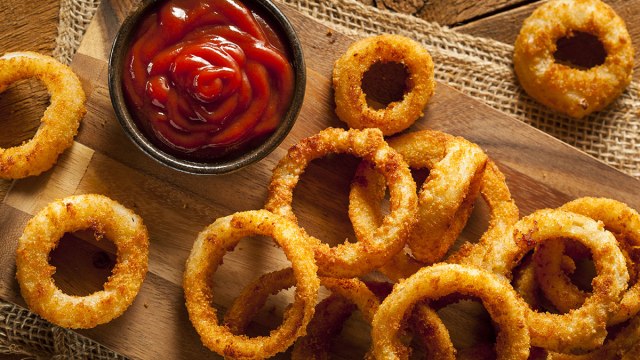
One to Avoid: Red Robin Frozen Onion Rings
Fried foods are a doozy for your waistline as they are high in calories and saturated fat, which can lead to inflammation and weight gain.
“This inflammatory food is bad news for your slim tummy since inflammation seems to impair leptin, your hunger hormone that regulates how much you should eat,” explains Lakatos Shames. Plus, it also raises cortisol, which when high, is linked to increased belly fat.
An example? Frozen onion rings. Sorry, but they’re not all that much better than the ones you can order at a fast-food restaurant.
“The 5 grams of saturated fat [you get from 6 rings], as well as the inflammation and associated weight gain, can be bad for your health if you eat these too frequently,” says Lakatos Shames.
Plus, fried food is especially bad for heart health, increasing the risk for heart disease, high blood pressure, and stroke.
Chips
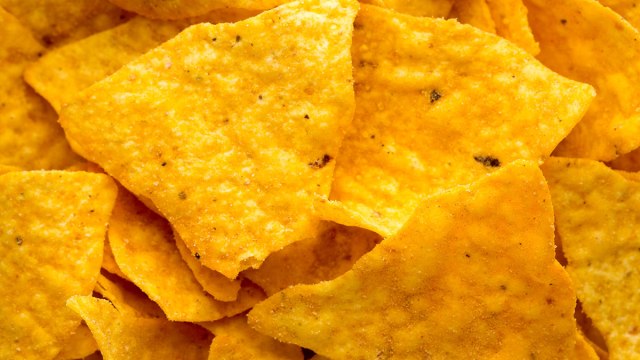
One to Avoid: Doritos, Nacho Cheese
Chips in general, especially fried chips, are best always left on the store shelves.
“They contain high calorie and inflammatory ingredients, and one of the most concerning ingredients in chips is the vegetable oil they are made with,” says Best. “This oil is generally canola, corn, or sunflower or a mixture of all three, which are all high in omega-6 fatty acids, a kind of inflammatory fat. Though it is an essential fat, if the balance between omega-3 and omega-6 is off the body becomes inflamed and weight gain can ensue, along with other concerns.”
Looking for more helpful tips? Sign up for our newsletter to get daily recipes and food news in your inbox!
Candy Bars
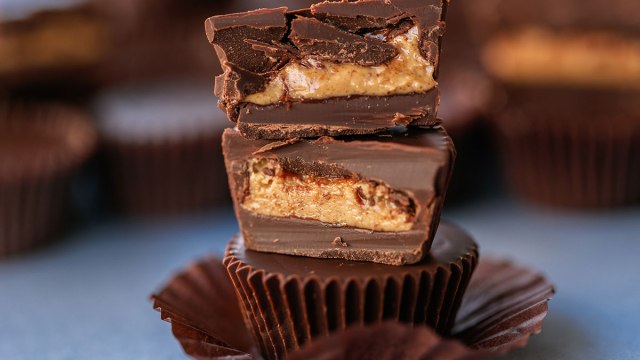
One to Avoid: Reese’s Peanut Butter Cups
This one is rather heartbreaking. But considering the amount of calories for such a small serving, it’s hard to stick to portion size and still feel satisfied. And indulging in candy bars in general too often can lead to belly fat, according to a study published in the European Journal of Preventive Cardiology. There’s a high amount of added sugar, too. This can end up being stored as fat, as opposed to being used for fuel.
Packaged Ramen or Pasta Noodles
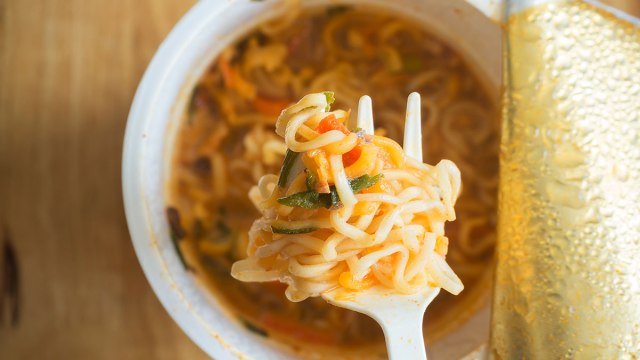
One to Avoid: Maruchan Ramen Instant Lunch, Chicken Flavor
Pre-packaged pastas make for easy and convenient lunches. However, they are often high in sodium, refined carbohydrates, and saturated fat—all of which contribute to weight gain.
“It is best to either avoid these types of meals or eat them on rare occasions,” says Best.
Make your own pasta with marinara and meatballs, and go for a whole wheat pasta or a bean or legume-based option, like Banza. (That one happens to be made from chickpeas.)
Fruity or Parfait Layered Yogurts

One to Avoid: Dannon Fruit On The Bottom Strawberry
Plain, Greek or Skyr yogurt is high-protein and calcium dense; yet, fruity or parfait yogurts (think: fruit on the bottom style or layered parfaits with fruit and granola) contain excess added sugar. Eating these spikes blood sugar and often just leaves you feeling hungry shortly after.
“A crash likely leads to overeating later in the day, which can lead to belly fat and weight gain,” says Best. Choose low sugar or plain yogurt, and then add natural sweetness, like fresh berries or other fruits.
White Bread
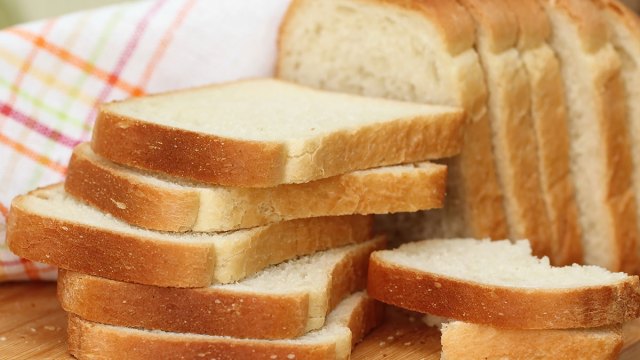
One to Avoid: Sara Lee Classic White Bread
White bread is refined, meaning it lacks fiber and beneficial nutrients, which are removed through processing.
“These refined carbs lead to quick sugar spikes and inflammation, both of which stall weight loss and damage health,” as well as lead to belly fat, says nutritionist and author of The Candida Diet, Lisa Richards.
Choose whole wheat or whole grain bread, as they’re often loaded with fiber. A hint to help you choose the right loaf?
“Check the ingredients list and avoid any breads that start with ‘enriched,'” Richards says.
The post The Worst Grocery-Store Foods for Belly Fat, Say Experts appeared first on .
